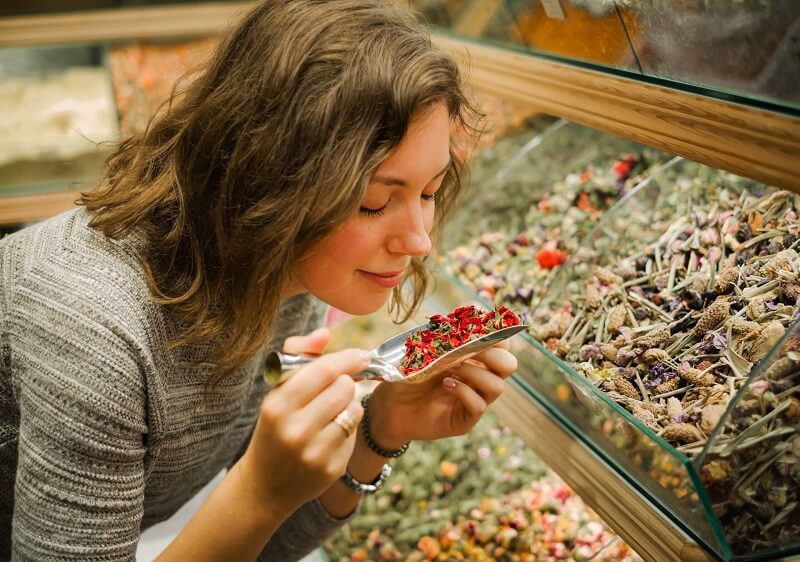
The Egyptian Bazaar is Istanbul’s second-biggest market. It is built in the same complex as the Yeni Camii, or New Mosque. There are six gates, which give it an attractive exterior. The L-shaped market, together with the mosque, was built for Mehmet IV’s mother, a powerful woman who ruled the harem and, some would say, much of the empire. Although it is no longer the city’s prime spice trading area, there is still the aroma of ginger, cardamom, pepper, and saffron from the piles of spices sold from many stalls.
These days, it is also popular for great varieties of lokum (Turkish delight), small souvenirs, flavoring teas, and local delicacies, including the dubious-sounding “Turkish Viagra.” Locals come here to shop for bed linen and towels, as well as fruit and vegetables, coffee, clothes, pots, and pans, in the surrounding cramped backstreets. Outside the market on the Galata Bridge end, this is the best place to choose olives from huge barrels and many varieties of beyaz peynir (white cheese).
Multiple sources indicate that the original name of the marketplace was the “New Bazaar.” After being constructed in 1660 using funds from the Ottoman eyalet of Egypt, the market became known as the Egyptian Bazaar (Turkish: Misir Çarşisi). Both “Egypt” and “maize” can be translated from the Turkish word “misir.” so much so that the incorrect translation “corn bazaar” is sometimes used. The bazaar was (and still is) the hub of Istanbul’s spice trade, but other types of stores have been slowly replacing them in recent years.
The structure is located within the New Mosque’s külliye (complex). The rent received from the businesses housed within the bazaar paid for the mosque’s upkeep.
After the Great Fire of 1660, which started on July 24, 1660, and lasted slightly more than two days (circa 49 hours, according to the chronicles of Abdi Pasha), many neighborhoods in Istanbul were destroyed. The structure was designed by the court architect Koca Kasm Aga, but construction began under the supervision of another court architect, Mustafa Aga, in the final months of 1660. After the fire, a large-scale effort to rebuild and revitalize the city began. Construction on the New Mosque resumed in 1660 (after being halted between 1603 and 1660; the mosque was finished between 1660 and 1665), and the Spice Bazaar was built in the same year.
Details to Consider Before You Go
Those who are interested in food should not miss the Spice Bazaar on their first trip to Istanbul.
The bazaar is best explored in casual footwear.
In addition to major credit cards, some merchants also accept cash payments.
Haggling is expected and is part of the culture, so don’t be shy about doing it.
Ways to Reach Your Destination
Eminonu Square, where the Spice Bazaar can be found, is a major transportation hub and can be reached by taxi, bus, ferry, or tram. The Grand Bazaar and the historical district of Sultanahmet are both within walking distance from the bazaar.
When Can We Expect It?
Daily, from 8 a.m. (or 9:30 a.m. on Sundays) until 7:30 p.m., you can shop at the Spice Bazaar. Locals and tourists flock to the Spice Bazaar, so going early is your best bet.
Haggling for a lower price is commonplace in the Spice Bazaar, so it’s essential to know the ropes. Set a maximum price you’re willing to pay in advance, then offer the seller something less than that because they’ll try to raise the price from there. Do not ever feel obligated to complete a purchase. The price is often reduced by the seller just before you walk away.